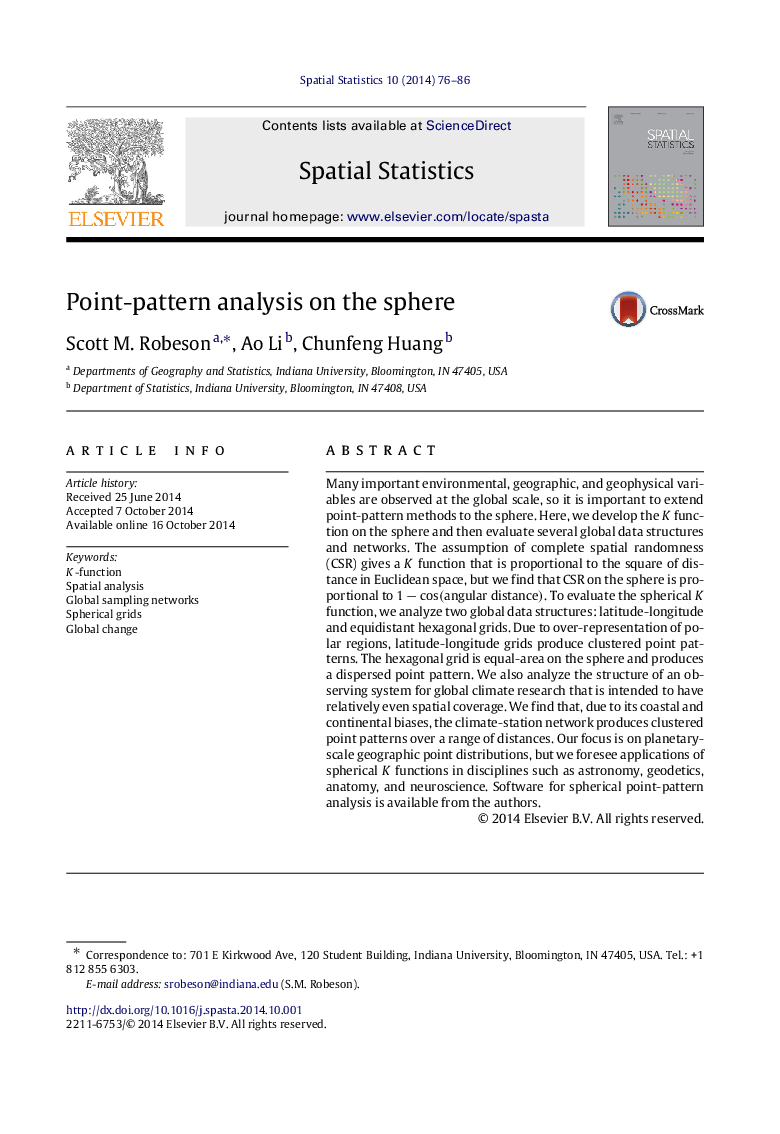| Article ID | Journal | Published Year | Pages | File Type |
|---|---|---|---|---|
| 7496654 | Spatial Statistics | 2014 | 11 Pages |
Abstract
Many important environmental, geographic, and geophysical variables are observed at the global scale, so it is important to extend point-pattern methods to the sphere. Here, we develop the K function on the sphere and then evaluate several global data structures and networks. The assumption of complete spatial randomness (CSR) gives a K function that is proportional to the square of distance in Euclidean space, but we find that CSR on the sphere is proportional to 1âcos(angular distance). To evaluate the spherical K function, we analyze two global data structures: latitude-longitude and equidistant hexagonal grids. Due to over-representation of polar regions, latitude-longitude grids produce clustered point patterns. The hexagonal grid is equal-area on the sphere and produces a dispersed point pattern. We also analyze the structure of an observing system for global climate research that is intended to have relatively even spatial coverage. We find that, due to its coastal and continental biases, the climate-station network produces clustered point patterns over a range of distances. Our focus is on planetary-scale geographic point distributions, but we foresee applications of spherical K functions in disciplines such as astronomy, geodetics, anatomy, and neuroscience. Software for spherical point-pattern analysis is available from the authors.
Related Topics
Physical Sciences and Engineering
Earth and Planetary Sciences
Earth and Planetary Sciences (General)
Authors
Scott M. Robeson, Ao Li, Chunfeng Huang,
